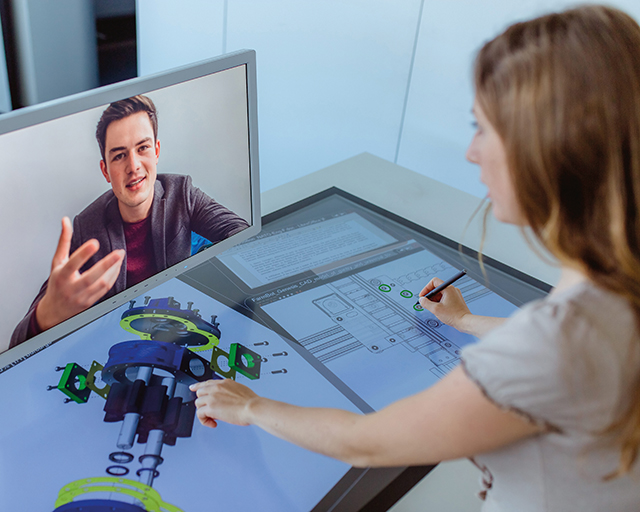How will we work in a post-Covid-19 world? This question preoccupies businesses more than any other. Fraunhofer IAO has succeeded in finding exciting answers to this question in a short time with the help of an innovative network project.
If you are reading this, we have accomplished the following: Participants spent six intensive months on the Connected Work Innovation Hub, a project that was the first of its kind at Fraunhofer IAO. The plan was to work together as a network to find out what a hybrid world of work might look like following the pandemic — and it’s safe to say that they’ve succeeded in doing so. Even experienced employees were surprised and proud of the amount achieved in such a short amount of time in this ambitious project, which ran from July to December 2021.
The idea for this first arose in mid-2021 at a meeting of the Advisory Board — the board of directors of Fraunhofer IAO — which is made up of representatives from science, business and public life. Among the ideas for future work presented by researchers was the Connected Work Innovation Hub initiative. The fundamental idea was to bring science and real-world experience together as part of an innovation network that would address the pressing questions surrounding the topic of hybridity. After all, the real issue is: Everyone knows that the world of work is changing more rapidly and to a greater extent than ever before. Often, though, there is still a lack of confirmed knowledge, means and skills to start taking the necessary steps to implement this transformation.
What does “hybrid world of work” actually mean? It means that there will be a dynamic and mixed approach to working locations in the future. For example, A group of colleagues meet at a virtual conference. Some of the colleagues attend in person, while the others dial in from their home office or a co-working space, which could be located anywhere in the world. This is a scenario that will be the norm in the future, so it needs to be set up in a specific way, since there are strong indications that hybrid working will be ubiquitous in all situations where the role allows it.
